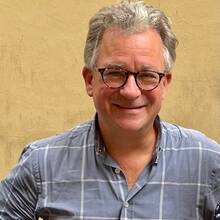Back in August I posted an item on the controversy over the disinterment of John Henry Newman, the British nineteenth-century convert cardinal who is on the track to sainthood. Almost as soon as special permission was obtained to move the body from its resting place outside Birmingham to a city church, gay campaigners were objecting to the separation of Newman from his longtime companion, Ambrose St John, with whom he shared his tomb.
Although the passionate love between them was entirely chaste, the campaigners were seeking to claim -- extravagantly -- that Newman’s was a "same-sex relationship" which the Catholic Church was trying to suppress, an accusation Rome felt the need to scotch. But even those who did not believe Newman was a "closet homosexual" were still concerned that Newman’s body was going to be dismembered to extract relics. For such an English saint -- the first non-martyr since the Reformation to be raised to the altars - it all seemed a little, well, Mediterranean.
(It has also been a running joke for religious correspondents, who have been proposing a "graveside webcam" to cover the disinternment, and speculating at the embarrassment that would follow from the discovery that the body of St John, not Newman’s, had been preserved.)
Last Thursday the grave was opened -- and the controversies disappeared in a puff of dust.
The tomb was empty.
No Newman. No St John. Only a few brass and wooden artefacts.
"An expectation that Cardinal Newman had been buried in a lead-lined coffin proved to be unfounded," said the Birmingham Oratory in a statement as leaden as the coffin should have been. It added that "in the view of the medical and health professionals in attendance, burial in a wooden coffin in a very damp site makes this kind of total decomposition of the body unsurprising."
There is something very Newmanesque about the end to this story. A shy, delicate, bookish man, he was never at ease with some of the aesthetic and ritual habits of the Church to which he spectacularly converted in 1844. The fact that there will be no lying-in-state, no marble sarcophagus to venerate, and no relics to distribute (beyond the few locks of hair that exist), seems hugely appropriate.
And how apt, in retrospect, seem the words of the epitaph which Newman and St John chose for their tomb: Ex umbris et imaginibus in veritatem -- "Out of shadows and phantasms into Truth."
Even in death, on his way to sainthood, Newman remains resolutely au dessus de la mêlée.







